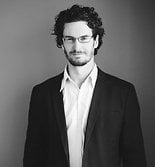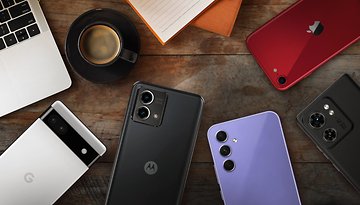What is the best way to charge your phone? USB Type-C, wireless, fast charging?


There are heaps of options for charging your phone these days. Once upon a time we simply had the choice between charging with a wall socket or with our computer and a USB cable, now have USB Type-C, wireless docks, fast charging and even fast charging wireless docks. So which is best? We take a look at charging speeds, life cycles and problems to help you decide on the best way to charge your phone.
USB Type-C
USB Type C is the new kid on the block. It will soon replace standard USB 2.0 charging cables. Even though there are only two ways to plug in a current USB cable, it always seems to take at least three attempts. Type-C plugs are reversible, so it doesn't matter which way you plug them in.

USB Type-C also has much faster data transfer speeds – up to 10 GB/s. But not always. 'True' USB Type-C uses the USB 3.1 standard, but with some devices, like the OnePlus 2, the USB Type-C cable is just a redesigned USB 2.0 cable. That means the OnePlus 2, using the included cable, won't transfer data any faster than any other USB 2.0 device. So be sure not to judge a book by its cover.
Furthermore, a redesigned USB 2.0 cable is not going to charge a device with a USB Type-C port any faster than a regular 2.0 cable, because on the inside it's the same. However, charging speeds are more limited by the device than the cable. So if your phone has a Type-C port and you get a real Type-C cable then you will get Type-C speeds.

A USB Type-C cable can charge at up to 100W at 20V, whereas most smartphones are limited to 18-24W (and the OnePlus 2 to 10W). Most USB Type-C equipped smartphones will be limited to 36W at at 12V with the upper reaches of USB Type-C's range reserved for laptops.
Wireless charging
Wireless charging usually works through one of a few standards: Qi, PMA, WPC are the most common. Some devices, such as the Galaxy S6 Edge+ and Galaxy Note 5, support both the Qi and PMA standard, making getting the right charger much simpler.
Wireless charging, for all its convenience, comes at a cost. For instance, it is slower than cabled charging because the efficiency of the power transfer is negatively affected by distance as well as the coupling strength between the magnetic coils in either side of the connection. Poorer coupling also generates more heat.

The other cost of wireless charging is literal: charging docks and platters cost significantly more than a regular cable. Where a regular USB Type-C cable will set you back US$5, a wireless dock can cost as much as US$50 (for an official Samsung wireless charger) or around US$20 for a no-name brand.
Wireless charging is generally around 20 percent slower than cabled charging but, you guessed it, it depends on the device and the output of the wireless charger. To give an example, the Nexus 5 cabled charger works at 1.2A and the wireless charger at 1A. Some wireless chargers will only charge at half the speed; Qi is limited to 5W where Type-C can hit 100W.

Fast charging
Fast charging is the latest and greatest innovation, even though it's not all that new. Qualcomm's Quick Charge 1.0 standard has been around since the Droid DNA and Nexus 4. Where Quick Charge 1.0 was 40 percent faster than regular charging, 2.0 was 75 percent faster, and the recently-announced Quick Charge 3.0 will be four times faster than standard charging.
Quick Charge 2.0 appeared in devices as far back as the HTC One M8 and 3.0 will appear in phones running Qualcomm's Snapdragon 820 next year. Despite the speed boost, what effect does fast charging – or turbo charging as its sometimes labeled – have on your battery?

Generally speaking, the life of a battery is dependent on charge cycles, although other factors like heat, humidity and damage can have an effect too. Lithium ion batteries don't have memory like some older battery types, meaning there is no need to fully deplete and fully charge them. But whether you charge them fully each time or not, their life span is still calculated in terms of full charge cycles.
If you want to fully understand how partial charges affect total charge cycles, you can visit the Battery University for a quick lesson on how partial discharges affect the life cycle of a lithium ion battery. But how does fast charging affect battery life?

If you're using the included charger (or an official optional accessory charger) then your battery life shouldn't be affected by fast charging. But a fast charge battery will still die sooner than a regular battery designed for more gentle charging. It's the battery tech equivalent of the brightest lights burning out the quickest. But fast charge batteries are designed with this in mind.

If you're using fast chargers that weren't designed for your device though, the variances in amperage, voltage and resistance can cause problems. Fast charging relies on special hardware in the charger and a chip in your phone that helps regulate how much charge is being pumped into your phone. Modify the ingredients in this finely balanced recipe, and you might have a mess on your hands.

Fast wireless charging
This is a whole new kettle of fish. Samsung introduced its new quick charge wireless platter alongside the Note 5 and S6 edge+. It's an optional extra and isn't backwards compatible with the regular S6 or S6 Edge. But it will provide quick charge capabilities with the convenience of wireless charging.
But how fast is it compared to regular wireless charging? The new fast wireless standard promises to be 1.4 times faster than regular Qi wireless charging and will up the charge ceiling to 15W – that's three times the current standard. According to Samsung, you'll charge your Note 5 or S6 edge+ 50 percent faster with fast wireless charging than you would with regular wireless.

With only two devices currently supporting turbo wireless there's not much we can offer in terms of real-world advice (unless you happen to own one of those two phones), but we're pretty sure all wireless charging will be adopting turbo speeds in the very near future.
So which is best?
That depends on what you want out of your battery. If you want to prolong your battery life as much as possible, a regular cable charger is your best bet. If you're all about convenience and hate cables then wireless is for you.
But if the fastest possible charge time is what you're after, then you're going to want to look for a cabled fast charger or USB Type-C device. If you're in the market for a new phone and want the best of all worlds then pick up a Note 5 or S6 Edge+ along with Samsung's fast wireless charger. Other devices will soon appear featuring the same tech.

In all honesty, a mixture of all methods is the most likely solution. You can fast charge at home where your fast charging adapter lives, charge wirelessly at the office where you have your nifty wireless dock, and with a regular cable at your non-techy friend's house.
Which charging method do you prefer? Is charging tech a consideration when buying a phone? Let us know in the comments.












Usb type C are much better than the flimsy cables we had before them.
USB type c and wireless charging both charge fast, which I test them by eseekgo type c cable and eseekgo wireless charger on 1 hour, the USB type c cable is faster than wireless charger. You can have a try.
Usb type C is best for speed and longevity. And that's how she likes it.
I'm glad you mentioned possible life span reduction with turbo charging, I have turbo charging available never used it, I like wireless charging, it seems to be most battery lifespan friendly way, .... just need a phone with it installed....
a non removable battery seems to be where OEM's are heading.....
which is OK coz we're all gonna change our tech every 24months right.
I tend to keep my S5 on the wireless charging pad (DigiYes) it's not the most efficient way to charge but it stops the battery from draining. I will only plug in the charger when the battery drops below 15%.
Wireless charging rocks!
I actually use the turbo charge cable that came with my S6 while I'm home during the day, and my Qi wireless charger at night next to my bed. The wireless is great because I can just grab the phone when I get a call or pick it up when the alarm goes off. There are benefits to using both.
Your "Which is best" is spot on. Keep you battery as cool as you can. From your link to the Battery University ... "Elevated temperature and high currents also affect cycle life." "optimal charge voltage is 3.92V/cell". "At 4.35V, the cycle count of a regular Li-ion is cut in half". Everyone should read the link.
wireless charging is best